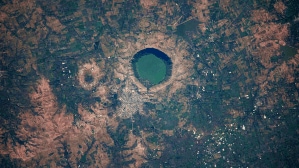Three presidents Tamil Nadu gave India
Even as the curtains came down on a never-seen-before electoral contest to choose India’s next president...

Even as the curtains came down on a never-seen-before electoral contest to choose India’s next president, Tamil Nadu can take pride in having given this country the most number of presidents: philosopher-patriot Sarvepalli Radhakrishnan (1962-67); economist and constitutional expert, Ramaswami Venkataraman (1987-92); and missile-scientist, A.P.J. Abdul Kalam (2002-07).
As constitutional functionaries, each of the three presidents has left an indelible mark on India as it evolved into a modern nation with a vibrant economy. But few would dispute the fact that 76-year-old Avul Pakir Jainulabdeen Abdul Kalam is one of the most loved figures to emerge from Rashtrapati Bhavan, having successfully recast the president’s office by making Raisina Hill more accessible to the public.
Radhakrishnan lent great dignity to the post of president, widely known and respected both internationally and at home as a great teacher and philosopher. He hailed from the pilgrim town of Thirutani and did much of his education, including obtaining a degree in philosophy, in Vellore and Chennai. As vice-president, Radhakrishnan, while presiding over the Rajya Sabha, would often break out into slokas or read out verses from the Bible to cool the surcharged atmosphere in the Upper House, prompting Jawaharlal Nehru to observe that he conducted the proceedings like family gatherings. While he fought for the dignity of the president’s office, he remained in the philosopher-teacher mould. Nehru, in fact, recognised this when he observed, “It is India’s peculiar privilege to have a great philosopher, a great educationist and a great humanist as her president.”
Venkataraman, who had a law background, knew the Constitution like the back of his hand. The oldest living ex-president, he was born in Thanjavur in Tamil Nadu in 1910, and did much of his higher education — which included a law degree — in Madras. Having served the Union cabinet in various portfolios, he brought this experience to bear on the office of the president and rose to the occasion in many critical situations in a politically eventful term.
In his book, My Presidential Years, Venkataraman talks about the ninth general election in November 1989, which produced a hung Lok Sabha, with the Congress securing the largest number of seats. He writes: “I… saw substance in the plea that a defeated ruling party should not be asked to form the ministry as it had forfeited the mandate of the people. But I also saw the danger of vesting discretion without objective criteria in the President.” The outgoing prime minister, Rajiv Gandhi, put an end to his dilemma by not staking a claim to form a government.
Perhaps the only controversy that marked his tenure was when he stalled a Bill giving higher pensions to MPs. Venkataraman termed it self-aggrandisement and, following his objections, the government too did not come back to Parliament on the Bill. But although he was hailed as a president whose approach was ‘impeccable’, Venkataraman remained a politician, drawing flak for using Rashtrapati Bhavan as a strategy centre for raging squabbles within the Congress Party back in his home state and indulging in petty factional politics by taking on G.K. Moopanar.
Abdul Kalam’s term had its share of difficult moments. The midnight signature he affixed on a proclamation dissolving the Bihar legislative assembly on March 23, 2005, was one such. The proclamation was later struck down as unconstitutional by the Supreme Court. But he came into his own by taking a stand against the Congress on the controversial Office of Profit Bill, although he eventually had to sign it.
What was remarkable about this aeronautical engineer, trained in the Madras Institute of Technology in Chromepet, was his wide acceptance among people. Arguably Kalam was — after Nehru — the most popular public figure with children. But while Nehru got caught up with his prime-ministerial responsibilities, Kalam managed to use his status as a scientist-educationist president to appeal to an emerging generation. He courted a deliberately informal presidential style, reaching out to the youth, signing autographs, joking with audiences, and generally appealing to people to contribute towards a “resurgent” India. His critics point out that his job was to counsel the government, citing constitutional precedence rather than appear to be taking part in a popularity contest. But Kalam was his own man. He chose to get closer to people, and they in turn responded to him. The deluge of positive responses to SMS polls, asking whether he should be given a second term, bears testimony to this.
When Kalam, one of the “simplest” of presidents, leaves Rashtrapati Bhavan with his two “little” suitcases, his veena and his books, there will be many in this country who will regret the fact that he did not get a second term as the first servant of the republic.



- 01
- 02
- 03
- 04
- 05




























